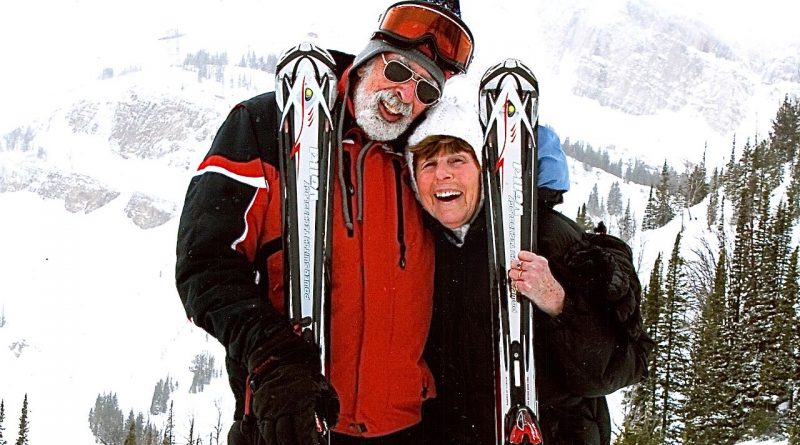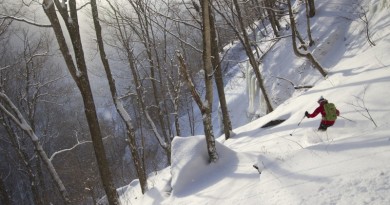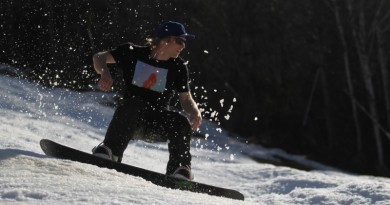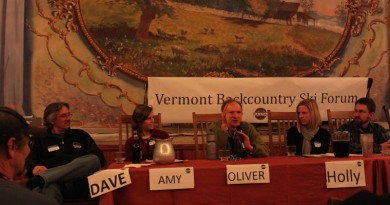Meet The Vermonters Who Made The 2017 Hall Of Fame
These Vermonters have made ski and snowboard history, on the slopes and off.
For a small state, Vermont turns out some big champions. Each year the Vermont Ski and Snowboard Museum in Stowe recognizes skiers and riders who’ve made major accomplishments in their careers.
This year’s Hall of Fame inductees include a world champion mogul skier, the godfather of telemark skiing in the U.S., the man who set in place some of Vermont’s strongest Nordic programs and a couple who have been integral in both creating and preserving ski culture and history in Vermont. Two special awards—the Paul Robbins award for journalism and the First Tracks award for accomplishment by someone under 35—are also handed out.
The winners are impressive and their stories, inspiring. If you want to learn more or meet them, attend the gala dinner at Stoweflake in Stowe on October 21. For tickets visit vtssm.com.
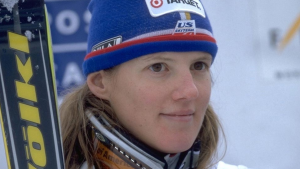 Ann Battelle: World Champion Bumper
Ann Battelle: World Champion Bumper
Growing up in Williston, Ann Battelle would get dropped off at Cochran’s ski hill with her school’s Friday afternoon program and at Bolton Valley every weekend. But it wasn’t until she attended Middlebury College and started skiing at Sugarbush with friends that she fell in love with bump skiing.
“We had a group of about 15 that would ski every chance we got—parents, big kids, little kids, everyone was welcome. We thought we owned that mountain, befriending the ski patrol and skiing Exterminator to what is now called Tumbler,” she remembers. One day she went to Whiteface to see a World Cup mogul event. As she describes it: “Solid ice bumps down the steep Wilderness trail. I had found my calling.”
After graduating from Middlebury College in 1989, she heard from a friend, Jeff Good,who was competing in moguls in Steamboat, Colo. She moved to Steamboat and by her second season competing made the U.S. National Team. Battelle went on to ski on the U.S. Freestyle team for 11 years. She was a two-time World Cup champion, won the World Championships in 1999 and competed in four Olympics. She retired after the 2002 Games.
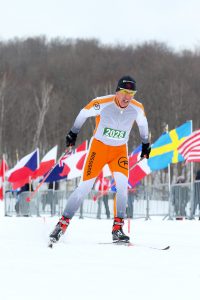 Jim Fredericks: The Nordic Coach
Jim Fredericks: The Nordic Coach
When Jim Fredericks first learned to Nordic ski at Johnson State College he had no idea how much the sport would shape his life. He liked it—enough to become one of the East’s top racers. He went on to coach at his alma mater and then, in 1978, started the Craftsbury Nordic Ski Center program and grew it into a hotbed where Olympic-level athletes now train and compete.
After Craftsbury, Fredericks launched the Nordic program at Green Mountain Valley School, a program that turned out a number of National Junior Champions. He then went on to Rossignol, working with their Nordic products and athletes. Finally, when Rossignol moved west, Fredericks took on the role of the Catamount Trail Associations’ executive director. Under his leadership the organization grew to become one of the strongest outdoor non-profits in the state and a voice for backcountry travel.
Fredericks also started The North Face Race to the Top of Vermont, a run and bike up Mt. Mansfield’s Toll Road that’s become one of the biggest fundraisers for the organization. Time has not slowed Fredericks down: he still competes on the national level on skis in the winter and in kayaks the rest of the year.
Dickie Hall: Godfather of Telemark
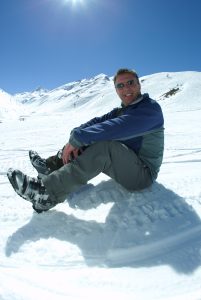
Few people since the early Norwegians have done more for telemark skiing than Waitsfield’s Dickie Hall, the founder and director of North American Telemark Organization from 1975-2015. Hall introduced the sport in every ski state with his Telemark Festival Series. He also conducted a yearly schedule of workshops, camps, expeditions and guide and instructor training. “Over the years I’ve probably taught over 40,000 skiers and trained 1,000 instructors and guides worldwide.”
Hall started his career on the Killington Ski Patrol in the early 1970s and taught Nordic skiing at nearby Mountain Meadows. He then started Trailhead Telemark and Backcountry Ski Center in Stockbridge. By the time he left Trailhead he was Chief Examiner and Certification Chairman for PSIA-E Nordic. In the late ’70s he got an offer he couldn’t refuse: “Mad River Glen gave me an opportunity to start America’s first alpine-based telemark ski school.” Hall and his wife Deb ran the annual NATO Telemark Festival at Mad River Glen for decades. “This was the world’s largest public event for telemark skiing, attracting over a thousand skiers for the weekend,” he recalls.
During his career, Hall also produced five movies on telemark and backcountry skiing, consulted and trained staff for the nation’s leading outdoor schools and was an adjunct professor of ski mountaineering for the University of Alaska Wilderness studies program. But he came back to Waitsfield, where Deb and he still live, and where Sugarbush will host the 2017 Telemark World Championships this January 22.
Chuck & Jann Perkins: The Keepers Of The Ski Culture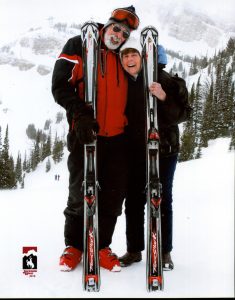
Chuck Perkins, a University of Vermont grad, was working for J.C. Penney when he and his wife Jann decided to open the Alpine Shop in Burlington. They bought an old building, tore it down and rebuilt a small chalet-style structure. They lived upstairs, with the shop downstairs. That was 1963. Over the next 47 years, the Perkins (and then their daughter Peg and husband Scott Rieley) built the Alpine Shop into more than just a retail outlet. They sold it in 2011 to Andy and Becky Kingston.
The shop quickly became a hub of ski culture, sponsoring Warren Miller films, promoting events like the Sugarbush Triathlon and serving as a gathering point for skiers. Jann recalls: “We provided the kick-off for Bogner’s new line of Fire and Ice skiwear when it was first introduced with a huge fashion show, cocktail party and the Fire and Ice ski movie. Suzie Chaffee was even there.”
The couple kept adding on space and purchasing real estate around Burlington and Stowe. Along the way, they became avid fans of ski history and collectors of ski memorabilia. The Perkins have been active in preserving the history of the 10th Mountain Division (Chuck has been named an honorary member) and helped host a 25th reunion for the mountain soldiers in Stowe.
Because of the couple’s devotion to ski history, another collector, Roy Newton, drafted them for help with the Vermont Ski Museum. Newton, publisher at the time of an earlier iteration of this magazine, Vermont Ski + Ride, had started the Vermont Ski Museum in 1988 behind his office in Brandon. Newton asked Chuck to be on his board and after a few years, to help build it up. The Perkins gathered a number of their ski friends from Stowe and formed the Fore Runner Club. They raised enough money to purchase Newton’s collection and convinced the town of Stowe to lease them a condemned meeting house on Main Street. “We had just sold a house in Stowe at the time and Chuck announced he was taking all the proceeds and was going to devote them to restoring the building so it could be the Ski Museum,” Jann says. “We have been board members and life members since the very start of the museum, and we promise it will always be an asset to the village of Stowe.”
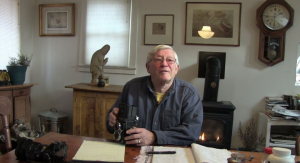 Peter Miller: The Paul Robbins Journalism Award
Peter Miller: The Paul Robbins Journalism Award
Most people know Peter Miller as the author and photographer behind the stunning photo books, Vermont People, Vermont Farm Women and most recently, Vanishing Vermonters: Loss of a Rural Culture, all self-published through Silver Print Press. What they may not know is that the first of Miller’s 11 published books were ski books, The 30,000 Mile Ski Race (Dial Press, 1973), about Americans in Europe on the World Cup circuit and then The Skier’s Almanac (Nick Lyons Press and Doubleday, 1980).
Miller grew up in Weston, Vt. and has always followed ski racing. From 1965 to 1988 he was a contributing editor to SKI Magazine and has visited 104 ski resorts on four continents. In 2014, Miller wrote on his blog: “I have three major ski racing heroes, Marvin Moriarty, a neighbor who raced in the 1950s and at 16 was on the US Olympic Team; Bud Werner who I met in 1957 in St. Anton when he was on crutches, from a spill in a race and Bode Miller, who I never met but have closely followed.”
Miller got his start as a photographer when, as a student at the University of Toronto, he had the chance to work with the legendary portrait photographer Yousuf Karsh. Miller assisted him in 1954 as they photographed celebrities living in Europe, including John Steinbeck, Albert Camus, Le Corbusier, Picasso, Pope Pius 23rd, Prince Philip and many others. Miller went on to work as a reporter and writer for LIFE Magazine before moving back to Vermont in the 1960s. He set up shop next door to the Waterbury Ben & Jerry’s headquarters in Colbyville.
In a 2013 tribute to Miller on the U.S. Senate floor, Senator Patrick Leahy (D-Vt.) said this about Miller: “His books have themes that exemplify Vermont: farm women, gathering places, small communities. He laments the waning of iconic farms, the erosion of small town values, and the fading of the once impermeable Vermont way of life. His resiliency is remarkable and his uncanny ability to display the beauty of Vermont in a way words cannot do justice serves as an inspiration for photographers everywhere.”
Kevin Pearce: The First Tracks Award
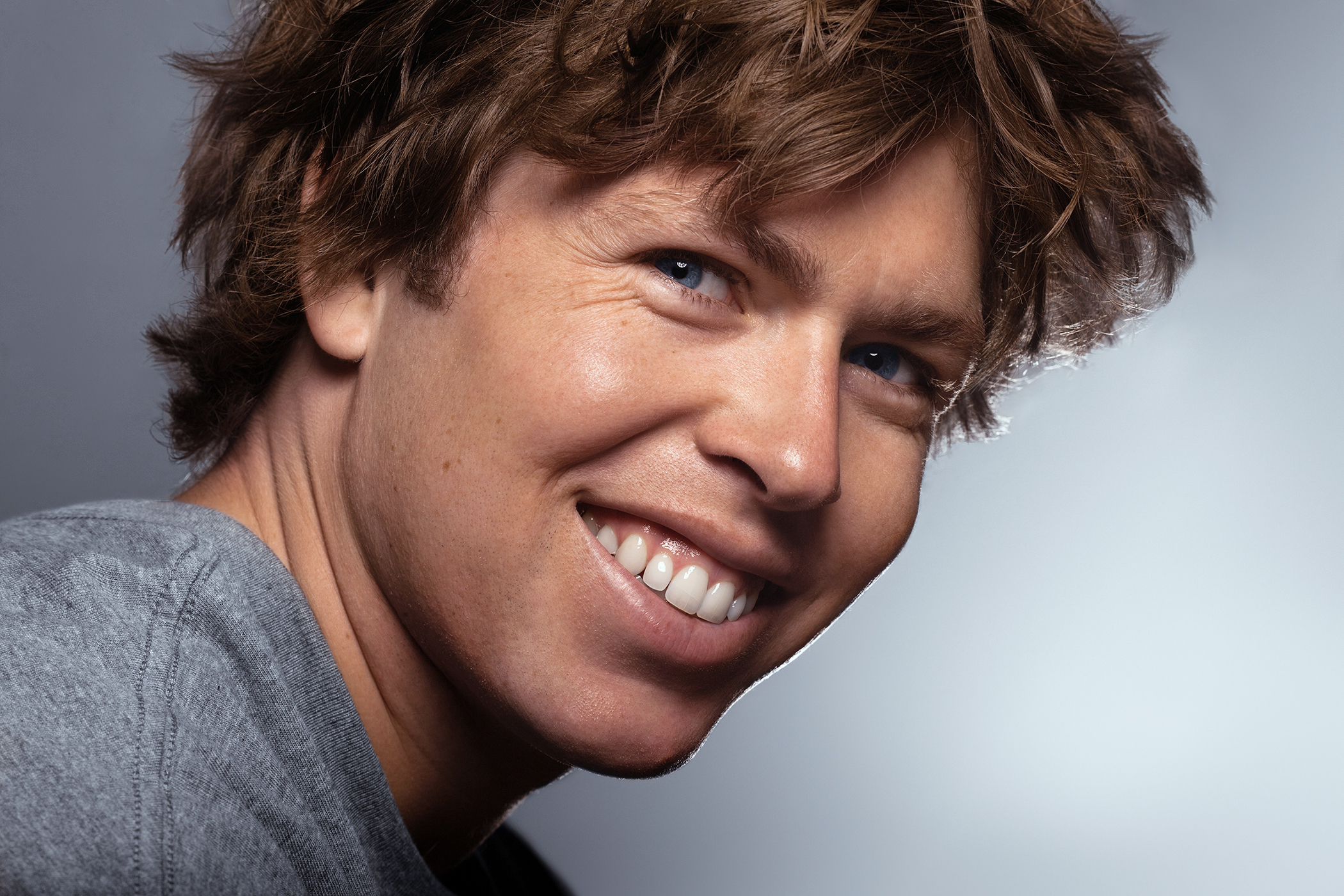 New this year, the Vermont Ski and Snowboard Museum is awarding the First Tracks Award, honoring a major and ongoing contribution to the sport by someone under 35. The award is in memory of board member Ian Graddock, a ski racer and board member of the museum, who passed away November 29, 2016 at age 35. The first recipient is Kevin Pearce.
New this year, the Vermont Ski and Snowboard Museum is awarding the First Tracks Award, honoring a major and ongoing contribution to the sport by someone under 35. The award is in memory of board member Ian Graddock, a ski racer and board member of the museum, who passed away November 29, 2016 at age 35. The first recipient is Kevin Pearce.
In 1995, at age 5, Kevin Pearce hand-wrote a letter to a family friend asking for a snowboard. Pearce is the son of glassware giant Simon Pearce and his wife Pia. The family friend was Jake Burton Carpenter. Soon, Pearce was riding every hill and mountain he could near the family home in Norwich.
By 18 he had turned pro, excelling in the halfpipe. In 2008, Pearce became the first athlete to win three medals at the X Games (and bested Shaun White in Slopestyle). That year he was also crowned overall champion of the international Swatch Ticket to Ride series. White and Pearce were the top contenders for the 2010 Olympics. Both had sponsors build them private half-pipes where they could practice.
On Dec. 31, 2009 Pearce was training in a half-pipe in Utah, working on a cab double cork, when he crashed hard. He suffered a severe traumatic brain injury and was hospitalized for four months. He was, in his own words, “lucky to be alive.” Pearce’s story made headline news and a movie Crash Reel, about his injury and recovery, played at Sundance in 2014.
It took Pearce nearly two years to recover enough so that he could snowboard (no air or halfpipes anymore). He’s since turned his energy to helping others. Pearce started the Love Your Brain Foundation to help others with TBI and serves as a sports ambassador for the National Down Syndrome Society (his brother David has Down Syndrome). With his buddies and fellow pro snowboarders Jack Mitrani, Danny Davis and others he is part of the Frends Group, which drew more than 3,000 to their annual Frends Gathering concert weekend in Sugarbush this past summer.
In 2014, when he was named a National Geographic Adventurer of the Year, Pearce told the magazine: “I’m still getting better to this day, and working at it has been so brutal on me. I feel like I can use [that awareness] and really do something important and special.”

